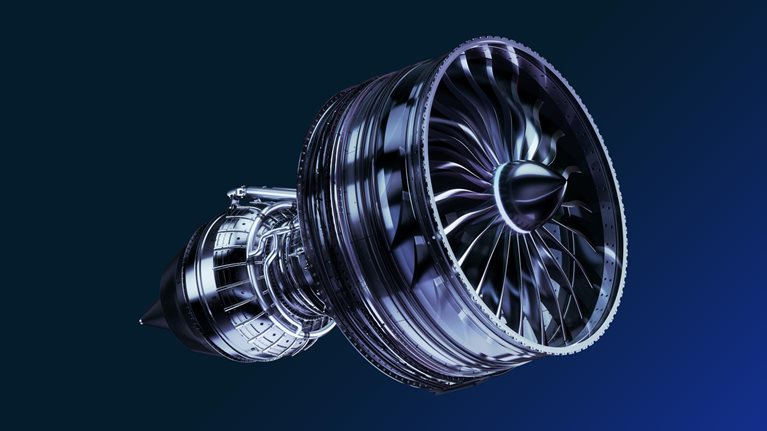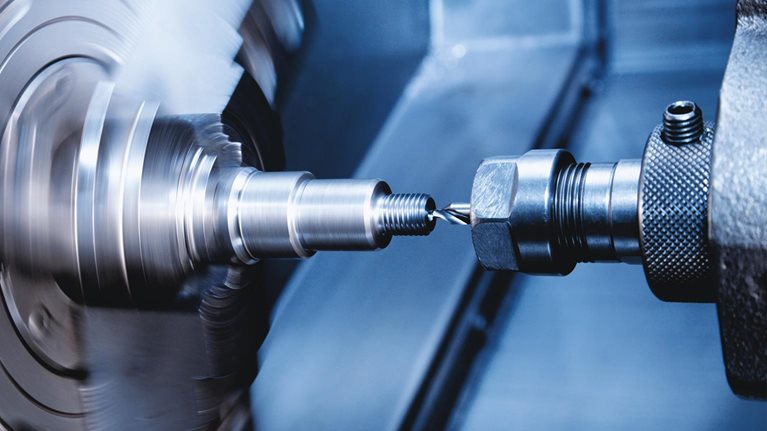The industrials sector is large and diverse, with segments ranging from giant industrial machinery to tiny electronic components. It underwent a period of turmoil during the financial crisis of 2008–10. Our prior research—the 2017 report titled Industrials: A phoenix ready to rise again?—showed that the sector recovered from the challenges posted by the crisis. Our more recent investigation, summarized in this report, shows that some industrials companies are still stronger than they were before the financial crisis, but others are now struggling to generate shareholder returns because of recent headwinds related to the global pandemic and international trade tariffs.
If industrials leaders understand the factors that shape performance in their sector, they may be able to keep their companies on a robust long-term growth trajectory. After reviewing the sector’s recent performance, we explore these factors by focusing on value creation, as measured by annual growth in total shareholder returns (TSR). In addition, we explore the impact of the COVID-19 crisis on industrials, since this is top of mind for many leaders, and review strategies for optimizing future value creation.
A detailed, multilevel evaluation of performance
Overall, the industrials sector performed well over the past five years, with a compound annual growth rate (CAGR) in TSR of 11 percent from 2014 to 2019—400 basis points higher than returns in the previous 15 years (Exhibit 1).

Segment performance
Performance varied across the sector’s various segments. For example, TSR CAGR ranged from 4.1 percent for electrical components and equipment to 17.3 percent for electronic components and equipment. We also observed that segments changed their relative positions over time. Two of the lowest-performing segments in 2001–14 (electronic components and equipment and industrials services) rose to positions in the top three segments in TSR performance during the 2014–19 period.
Microvertical performance
In order to understand performance at a more detailed level, we also looked at trends across microverticals—clusters of similar companies defined by product portfolio and end-market focus. This review showed significant variation among groups, including a 2,600-basis-point differential in TSR between top- and bottom-quintile microverticals. Factors that influenced their performance include regulatory policy, technological developments, consumer and socioeconomic shifts, environmental issues, industry structure, and player moves.
Top-performing microverticals tended to be in markets that have experienced favorable consumer demand and that benefited from tailwinds from regulatory policy and technological developments. Meanwhile, bottom-performing microverticals were concentrated in mature segments that bore the brunt of punishing headwinds. These structural strengths and disadvantages are not permanent: 45 percent of microverticals moved two or more levels of relative performance over the past five years, as the impact of headwinds and tailwinds waxed and waned. It is also important to note that the headwinds and tailwinds affecting a microvertical are not the only factors determining a company’s performance. About 30 percent of companies performed significantly above or below what their microvertical classification would have predicted, suggesting that companies still control their own destinies.
Company performance
Performance also varies widely at the individual-company level. To understand the impact of “neighborhood”—that is, the conditions of the microvertical—on company performance, we grouped companies according to their performance by quintile and also categorized their microverticals by quintile, based on their five-year (2014–19) TSR CAGR. After combining the two measures, we found that 30 percent of the companies either outperformed or underperformed their microverticals—and this means that they control their destiny (Exhibit 2).

Decomposing TSR to evaluate critical performance drivers
To determine what company-level actions matter, we first examined three aspects of TSR performance:
- Operating performance refers to how a company invests to grow revenues and expand its operating margins; this category also includes the impact of endowment—in other words, a company’s ability to generate value for its shareholders in a no-growth and as-is profitability scenario.
- Leverage impact refers to how companies use debt to enhance their TSR performance.
- Multiple expansion refers to opportunities to benefit from changes in investor outlook.
Our analysis revealed that a company’s operational performance is the most critical driver. Looking at TSR performance of the top-quintile companies, operating performance accounted for 18 percentage points of the 27 percent TSR growth. At bottom-quintile companies, operating performance accounted for −6 percentage points of the −11 percent TSR growth.
Within operational performance, margin improvement was the key determinant of TSR performance. Other drivers, mainly leverage and multiples, appeared to matter less. Unlike operational performance, they also differed in their impact on top-performing and bottom-performing companies.
Learnings from top performers
We studied the highest-performing companies to glean lessons that might help others create or retain high value. For the period from 2014 to 2019, we found that approximately 29 percent of companies moved to a higher quintile for TSR CAGR (Exhibit 3). Companies that can improve performance can reap considerable rewards. Top-quintile companies generate, on average, 1,200 basis points higher revenue growth, 680 basis points higher expansion in earnings before interest, taxes, dividends, and amortization (EBITDA), and 50 percent higher enterprise value (EV)/EBITDA multiples than their bottom-quintile peers.

When we looked at top performers more closely, we found that their success primarily depended on taking three steps: leveraging technology to achieve profitable growth, instituting better corporate oversight, and building a platform through M&A to drive expansion.
Leveraging technology to achieve profitable growth
Two metrics help companies understand whether they are driving bottom-line improvements in profit faster than top-line revenue growth. The first is profit-revenue spread (PRS), measured as change in EBITDA above change in revenue. The second is operating-leverage multiple (OLM), measured as the extent to which EBITDA growth outpaces revenue growth. Top-quintile companies had 80 percent higher PRS and an OLM that was 2.1 times higher.
To show how top-quintile companies were much more effective at securing profitable growth, we calculated each company’s PRS as the percentage change in EBITDA net off the percentage change in revenue. Then we analyzed the PRS of top-quintile versus bottom-quintile companies. PRS was 62 percent for top-quintile companies. For bottom-quintile companies, PRS was just −18 percent, meaning their EBITDA growth trailed their revenue growth.
Would you like to learn more about our Advanced Electronics Practice?
Instituting better corporate oversight
An effective level of oversight is a critical building block for a company to secure top-quintile performance. To measure corporate oversight, we use McKinsey’s Corporate Oversight Index (COI), which incorporates four elements that influence company performance:
- Ownership is expressed as the proportion of investment dollars from index funds and the degree of alignment between management and board incentives with company performance.
- Analyst coverage is measured as the number of external analysts covering the company.
- Liquidity is evaluated from the average percentage of total company shares trading daily. A high average percentage of shares traded daily means there are too many short-term investors, resulting in lower TSR performance.
- Leadership team is defined as CEO tenure in role and diversity of board members, in terms of relevant experience and capabilities.
Improving oversight requires a multipronged approach to enhance all four factors. Industrials should remember, however, that better oversight alone cannot secure a top-quintile position. After all, there is a 41 percent difference in COI between bottom- and average-performing companies, but there is no difference in COI between average and top performers. It appears that focusing on other levers—growth, margin expansion, and leverage—is also necessary to ensure top performance.
Building a platform to drive expansion
Once companies achieved profitable growth and improved oversight, they benefited considerably from building a platform through M&A to drive expansion into new markets or secure scale in existing markets. When we looked at the acquisition trajectories of industrials companies since 2010, it became obvious that many companies that performed well over the past five years significantly increased the size and frequency of their deals over time.
From 2010 through 2019, the top-quintile companies undertook an average of 9.2 deals—a figure that is 43 percent higher than the 6.5 deals for the bottom-quintile companies. To understand the quantum of M&A activity, we compared the revenue of companies that were acquired to the acquiror’s revenue at the start of the period, that is, 2009. We observed that top-quintile companies, on average, acquired companies with revenues totaling 58 percent of their 2009 revenues over a period of ten years. This was 2.1 times more than that of their bottom-quintile peers, who acquired companies with revenue totaling 28 percent of their 2009 revenues.
The impact of the COVID-19 crisis
It is impossible to think about the future of industrials without factoring in the impact of the COVID-19 crisis. Since the start of the pandemic, year-to-date market capitalization has varied significantly by sector. Industrials saw a 1 percent decrease in weighted average year-to-date local-currency shareholder returns as of July 31. Relative to other industries, this amounted to middle-of-the-road performance. Over the same time period, industrials underperformed the S&P 500 by 270 basis points; the index as a whole grew by 1.1 percent, while industrials shrank by 1.6 percent.
As economies shuttered and demand stagnated, most industrials companies saw their order volume and top-line growth fall. While it is still too early to judge the true impact on the top line, company revenue declined 8 percent year over year in the first quarter of 2020, and the situation was expected to worsen. The decreased revenue will likely amplify existing liquidity issues. We expect that 68 percent of companies likely face challenges if revenues drop by 20 percent, and 76 percent are at risk if revenues drop by 30 percent. Mid- and small-cap companies constitute about 90 percent of high-risk companies. Companies in certain microverticals—including automotive and ancillaries, industrials services, and home-building products and technology—account for the largest proportion of high-risk companies. Overall, the greatest risk comes from a triggering of debt covenants (for example, net debt to EBITDA and interest service coverage ratio), which will require an immediate uplift in EBITDA margins.
Based on our experience, the companies likely to emerge strong from the current crisis will be those that have developed a detailed set of initiatives around four priority areas: protecting employees and ensuring operational continuity, maintaining financial health, adapting sales and marketing, and screening and safeguarding their supply chain.
Imperatives for future value creation
Executives, boards, and investors will play crucial roles in steering companies to greater heights. Their engagement across three dimensions can help industrials succeed.
Understanding headwinds and tailwinds that could affect microverticals
Business leaders in the industrials sector should ask themselves which factors will affect their companies. This requires leadership with the necessary insights. The board of directors should be composed of members who understand the market and the company’s position within it; this will help keep an eye on possible future disruptions and help shape strategic plans of their management team. Investors, too, likely understand the attractiveness of various microverticals, so their decisions and reasoning can provide important insights.

Organizing for speed in advanced industries
Developing a playbook for a holistic transformation
Another necessary action is to ensure that the company’s strategy for a holistic transformation lays out the right moves to boost performance significantly. For this, we return to two of the three value-creation factors that have driven success for top performers in the past: achieving profitable growth and leveraging M&A. Besides pursuing revenue growth, companies add the most value by seeking margin transformation. We have seen top performers execute margin-expansion programs by reducing sourcing costs, optimizing their network footprint, reducing operating expenses, and creating systems to optimize the price for each customer or customer type. Product differentiation also often provides an opportunity for widening margins. Companies can expand or enhance their offerings to customers, such as delivering software as a service to enhance the value of products and build a continuous revenue stream.
M&A, as we have seen, can be a key part of a company’s value-creation strategy. Mergers and acquisitions can provide access to new products or markets with attractive potential, especially in terms of revenue growth and margin expansion.
Enabling and sustaining success
Through our research on drivers of performance, we uncovered the contribution of strong corporate oversight on company TSR. Corporate oversight is a function of many components but five of them are the most noteworthy: (1) shareholding proportion of index funds and value of ownership shares, (2) analyst coverage, (3) proportion of shares traded daily, (4) CEO tenure, and (5) board composition and capabilities. Companies that examine their strengths and weaknesses in these areas are most likely to develop a strong plan for improvement.
As industrials try to improve oversight, they will likely need to engage the broader ecosystem. For example, companies need constructive relationships with government and regulatory bodies, trade and industry associations, and others who can become the source of the microvertical’s next headwinds or tailwinds.
Industrials play a critical role in the global economy through their contribution to employment and business revenues. To maintain their strength and emerge in an even better position after the pandemic, they must begin planning now. Those companies that focus on key value drivers and restructure their organizations to suit the new landscape will carry the industrials sector to greater heights.


